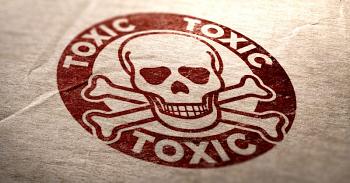EPA Approves Chemical ‘Air Treatment’ Against COVID, Despite Known Health Hazards
In mid-January, the U.S. Environmental Protection Agency (EPA) approved requests from two southern states (Georgia and Tennessee) asking for an emergency exemption that would allow them to aerosolize selected indoor spaces with an antiviral “air treatment” called Grignard Pure.
Grignard Pure is a nanoparticle-based product. Its active ingredient is a substance called triethylene glycol (TEG).
The EPA’s approval slid in under Section 18 of the Federal Insecticide, Fungicide and Rodenticide Act (FIFRA), which allows the agency to green-light pesticides for unregistered uses in defined geographic areas for up to a year during public health emergencies deemed “urgent” and “non-routine.”
Grignard Pure contains TEG as a standalone chemical compound, but TEG is also a component of some polyethylene glycol (PEG) compounds (those of low molecular weight).
Since last summer, Children’s Health Defense (CHD) has raised urgent questions about the presence of PEG in the nanoparticle-based mRNA vaccines developed by Pfizer and Moderna, authorized by the U.S. Food and Drug Administration (FDA) for emergency use against COVID.
In a Dec. 14 press release and in letters to leaders at the Department of Health and Human Services (HHS), the FDA and the National Institute of Allergy and Infectious Diseases (NIAID), CHD warned about PEG’s known association with adverse immune responses, including life-threatening anaphylaxis.
An estimated 72% of the general population has anti-PEG antibodies (including elevated levels in 8% of Americans) that can set those individuals up for adverse reactions when later exposed to PEG-containing substances.
Pharmaceutical and biotech companies, acutely aware of the correlation between anti-drug antibodies and increased adverse effects, acknowledge that the phenomenon poses a “vexing” and “serious” clinical problem — one that has come into sharp relief as recipients of COVID mRNA injections experience severe allergic reactions.
In light of the interrelationship between PEG and TEG, the planned diffusion of nanoparticle-based TEG in public spaces — including through building heating, ventilation and air conditioning (HVAC) systems — introduces important new questions: Could individuals already sensitized to PEG go into anaphylaxis when they inhale TEG? Or conversely, might people who are exposed to aerosolized TEG then become sensitized to PEG — and run the risk of an adverse reaction when they subsequently encounter a PEG-containing mRNA injection or another “PEGylated” drug?





